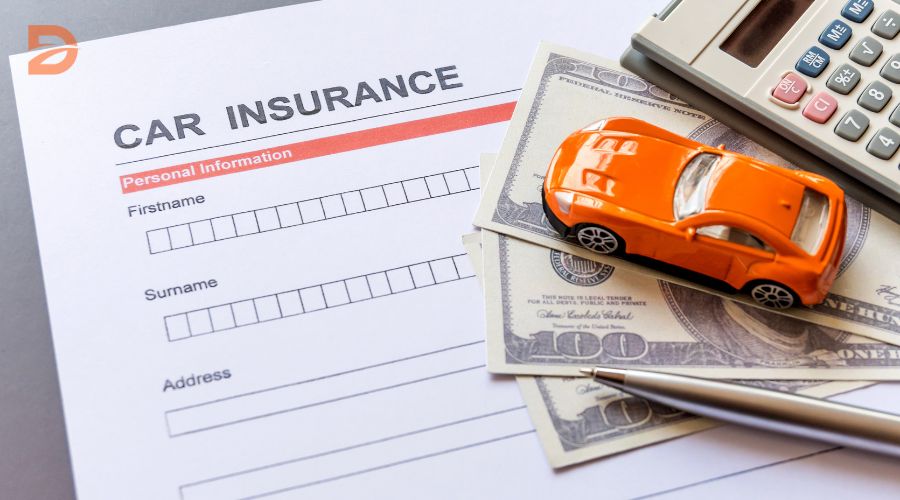Are you paying too much for your auto insurance? With the rising costs of vehicle ownership, it’s essential to find ways to reduce your insurance premiums without sacrificing the coverage you need. But how can you ensure you’re getting the best deal on your policy? The answer lies in understanding the many strategies available to lower your auto insurance costs.
Key Takeaways
- Take advantage of multi-car discounts by insuring multiple vehicles with the same provider.
- Bundle your auto and homeowners insurance policies to save on overall coverage costs.
- Maintain a clean driving record to avoid rate hikes due to accidents or violations.
- Consider taking a defensive driving course to qualify for potential insurance discounts.
- Shop around and compare quotes from different insurers to find the best rates for your needs.
Shop Around for Better Rates
When it comes to car insurance, the adage “shop around” couldn’t be more true. Prices can vary widely between insurance companies, so it’s important to compare quotes from multiple providers to find the best rate for your needs. Get at least three price quotes from different insurers, including both direct-to-consumer and agent-represented companies.
Compare Quotes from Different Insurers
Don’t just focus on the lowest price tag. Also, consider the financial strength and customer satisfaction ratings of the insurance companies. Check reviews and consult rating agencies like AM Best and Standard & Poor’s to get a sense of each provider’s financial stability and reputation for good service. Additionally, ask friends and family for recommendations and contact your state insurance department to learn about consumer complaints by company.
Consider Different Types of Insurance Companies
Explore a variety of insurance providers, from national giants like State Farm and Geico to regional and niche companies. For example, USAA offers exclusive coverage for military members and their families, often at very competitive rates. Smaller, local insurers may also provide unique policy options and personalized service.
Don’t Shop by Price Alone
While cost is certainly an important factor, it’s crucial to understand the coverage levels and policy details, not just the final price. A low premium may come with higher deductibles, less comprehensive coverage, or other limitations that could end up costing you more in the long run. Take the time to compare the value of each policy, not just the price tag.
Auto insurance, car insurance tips: Ask for Higher Deductibles
One effective way to lower your auto insurance premiums is to increase your deductibles. The deductible is the amount you pay out-of-pocket before your insurance coverage kicks in. By requesting higher deductibles, such as $500 or $1,000, you can significantly reduce your collision and comprehensive coverage costs, potentially saving 15-40% or more. However, make sure you have enough savings set aside to cover the higher deductible if you need to file a claim.
Car insurance deductibles typically range from $100 to $2,000, with $500 being the most common choice. Increasing your deductible from $100 to $250 can result in a 29% lower cost, while moving from $1,000 to $2,000 offers a 17% lower cost. The most savings in adjusting deductibles are seen from $100 to $250, while the least savings occur when going from $1,000 to $2,000.
Keep in mind that if your auto insurance deductible costs more than the repairs, you’ll pay the entire repair cost out of pocket. Additionally, in situations where fault is shared, you may end up paying all or part of your deductible for auto insurance. It’s important to consider your driving history and the likelihood of filing a claim when choosing a car insurance deductible amount.
| Deductible Amount | Potential Premium Savings |
|---|---|
| $100 to $250 | 29% lower cost |
| $1,000 to $2,000 | 17% lower cost |
By choosing a higher auto insurance deductible, you can enjoy premium savings while still maintaining the necessary coverage options for your vehicle. Just be sure to have the financial resources to cover the higher out-of-pocket costs if you need to file a claim.
Reduce Coverage on Older Vehicles
As your vehicle ages, it may make sense to adjust your insurance coverage to save on costs. When your car’s value decreases, maintaining comprehensive and collision coverage may no longer be cost-effective. These coverage types are designed to protect against damage to your vehicle, but their value diminishes as your car depreciates.
Determine When Collision and Comprehensive Coverage Isn’t Cost-Effective
A general rule of thumb is that if your car’s value is less than 10 times the annual premium for collision and comprehensive coverage, it may be time to consider dropping these coverage types. You can easily check your car’s worth using resources like Kelley’s Blue Book. By reviewing your coverage needs at each renewal, you can ensure your insurance still meets your needs as your vehicle ages.
For example, the cost of insuring a 5-year-old midsize car with full coverage is on average $2,010 a year, while the average value of these cars is $7,501. However, between 10 and 15 years after a vehicle’s model year, full coverage insurance is a poor investment as it is likely to be higher than the value of the car after an accident.
Older vehicles may have more expensive parts, impacting insurance costs, and repairs can be costly due to sourcing these parts. Additionally, older cars may have fewer safety features, potentially increasing insurance premiums. By adjusting your coverage as your car ages, you can optimize your older vehicle insurance and ensure you’re not overpaying for protection that may no longer be necessary.
| Vehicle Model | Depreciation Rate | Insurance Cost Decrease |
|---|---|---|
| Honda Civic | 29% per 5 years | 11% per 5 years |
| Toyota Corolla | Not provided | 13% per 5 years |
| Chevrolet Malibu | Not provided | 13% per 5 years |
| Ford Fusion | Not provided | 13% per 5 years |
By understanding the balance between your car value and policy adjustments for collision and comprehensive coverage, you can make informed decisions to reduce your older vehicle insurance costs while still maintaining the protection you need.
Bundle Your Policies with One Insurer
Bundling your auto insurance with other policies, such as homeowners or renters insurance, can be an effective way to save money. Many insurance providers offer bundled insurance policies and multi-policy discounts when you insure multiple products with the same company. This can lead to premium savings and demonstrate your insurance provider loyalty.
According to industry data, the potential savings from bundling can be substantial. Allstate offers a bundling discount of up to 25%, while Farmers provides an average of 20% off. Nationwide and State Farm also offer significant bundling discounts, up to 20% and $1,273 annually, respectively. However, it’s important to shop around and compare the total cost, as the savings may vary depending on your specific situation.
| Insurance Provider | Bundling Discount | Financial Strength Rating | Customer Satisfaction |
|---|---|---|---|
| State Farm | Up to $1,273 annually | A+ (Superior) | Ranked 1st for Term Life Insurance |
| Allstate | Up to 25% | A+ (Excellent) | Best for Bundling Home and Auto Insurance |
| Farmers | Average of 20% | A (Excellent) | Scored toward the bottom for Home Insurance |
| Nationwide | Up to 20% | A+ (Superior) | Not Ranked |
| Travelers | Variable | A+ (Excellent) | Ranked 3rd to last for Home Insurance |
While bundling can provide significant savings, it’s essential to weigh the total cost and coverage of the bundled policies against shopping for separate policies. Additionally, be mindful that loyalty discounts may be lost when switching insurance providers, so it’s advisable to compare options regularly to ensure you’re getting the best deal.
Maintain a Good Credit Record
Your credit history plays a crucial role in determining your auto insurance rates. Most insurers analyze your credit information to assess your risk profile, as studies show that individuals who effectively manage their credit tend to file fewer claims. To maintain a favorable credit record and potentially save on your car insurance premiums, follow these strategies:
Strategies to Improve Your Credit Rating
- Pay your bills on time. Payment history is the most significant factor in your credit score.
- Keep your credit utilization low. Experts recommend maintaining a credit utilization rate below 30%, with below 10% being even better.
- Check your credit report regularly for any errors and dispute them promptly. A study found that over one-third of Americans have discovered mistakes on their credit reports.
- Consider using a service like Experian Boost™ to potentially increase your credit score by getting credit for making on-time utility payments.
By taking these steps to improve your credit score, you can enjoy substantial savings on your car insurance. Drivers with poor credit (under 580) pay an average of 97% more for full coverage car insurance compared to those with exceptional credit (above 800). Increasing your credit score from poor to average could potentially save you around 20% on your annual car insurance costs, which equates to an average of $600.
| Credit Score Range | Average Increase in Car Insurance Rates |
|---|---|
| Poor (under 580) | 97% more |
| Average (580-669) | 46% more |
| Good (670-739) | 13% more |
| Exceptional (above 800) | Baseline |
By maintaining a good credit record, you can enjoy significant savings on your auto insurance rates and take control of your financial future.
Take Advantage of Discounts
When it comes to cutting your auto insurance costs, taking advantage of available discounts can make a significant difference. Insurance companies often offer a variety of discounts that can help lower your premiums. By understanding and taking advantage of these opportunities, you can potentially save hundreds on your car insurance.
Low Mileage Discounts
One of the most common discounts is for low annual mileage. If you drive less than the average number of miles per year, you may qualify for a discount on your car insurance discounts. This is because lower-mileage drivers typically pose a lower risk to insurers, so they’re often willing to offer savings.
Group Insurance Discounts
Another way to save is by taking advantage of group policies through your employer, professional organization, or other affiliation. Many insurers offer discounted rates for these types of group insurance discounts, as they view these policyholders as a lower-risk pool.
Other Common Discounts
- Good student discounts – Maintain a good academic record and receive a discount on your car insurance.
- Defensive driving course discounts – Complete an approved defensive driving course and potentially lower your rates.
- Anti-theft device discounts – Install certain security features in your vehicle and qualify for additional savings.
- Bundling discounts – Combine your auto and home (or other) insurance policies with the same provider to receive a multi-policy discount.
Be sure to inquire about all available car insurance discounts when shopping for or renewing your policy. Taking advantage of these opportunities can help you save a significant amount on your overall car insurance costs.
| Discount Type | Average Discount | Potential Savings |
|---|---|---|
| Bundling Auto and Home Insurance | 18-23% | $486 – $787 |
| Good Driver / Safe Driver | 4-26% | Varies |
| Defensive Driving Course | 5-10% | Varies |
| Good Student | 8-25% | Varies |
| Pay in Full | Up to 14% | Varies |
| Electronic Funds Transfer (EFT) | 3-6% | Varies |
| Paperless Billing | 1-6% | Varies |
| Online Quote | 4-12% | Varies |
| Occupational Discounts | Up to 15% | Varies |
| Usage-Based Insurance | 5-10% enrollment, 5-40% safe driving | Varies |
Conclusion
Reducing your auto insurance cost doesn’t have to be a complex process. By implementing strategies like shopping around, increasing deductibles, adjusting coverage reviews on older vehicles, bundling policies, maintaining good credit, and taking advantage of available discounts and savings, you can find ways to save money on your car insurance premiums without sacrificing the coverage you need. Regularly reviewing your policy and making adjustments based on your changing needs and life circumstances can help ensure you’re getting the best value for your auto insurance policy optimization.
Remember, auto insurance rates can fluctuate based on a variety of factors, from driving habits and location to vehicle age and credit history. By staying informed and proactive, you can take control of your car insurance costs and ensure you’re getting the coverage you need at a price that fits your budget.
Whether you’re a new driver or a seasoned vehicle owner, implementing these strategies can help you maximize your savings and find the best auto insurance plan for your needs. With a little research and some smart decision-making, you can drive with confidence, knowing you’re protected on the road while keeping your costs in check.
FAQ
What are some key ways to lower my auto insurance costs?
Some effective ways to cut your auto insurance costs include taking advantage of multi-car discounts, bundling your auto and homeowners insurance, maintaining a good driving record, and increasing your deductibles.
How can I find the best deal on car insurance?
To find the best car insurance rates, shop around and compare quotes from multiple insurers, both direct-to-consumer and those that sell through agents. Also, consider the financial strength and customer satisfaction ratings of the insurance companies in addition to the final price.
When should I consider reducing or dropping certain auto insurance coverage types?
As your vehicle ages, it may make sense to reduce or drop collision and comprehensive coverage if the car’s worth is less than 10 times the annual premium for those coverages. Review your coverage needs at each renewal to ensure your insurance still meets your needs.
How can bundling my insurance policies save me money?
By insuring multiple products, such as your auto and homeowners insurance, with the same provider, you may qualify for a bulk rate or loyalty discount. However, it’s still important to shop around and compare the total cost, as you may find better savings by insuring each policy separately.
How does my credit history impact my auto insurance rates?
Most insurers use credit information to help determine policy pricing, as research shows that people who effectively manage their credit tend to file fewer claims. Taking steps to improve your credit score can lead to substantial savings on your car insurance premiums.
What are some common auto insurance discounts I should look for?
Common discounts include those for low annual mileage, group policies through your employer or organizations, good student status, completion of defensive driving courses, and installing anti-theft devices. Bundling your auto and homeowners insurance may also qualify you for additional savings.










